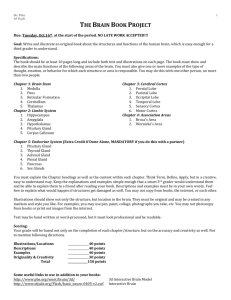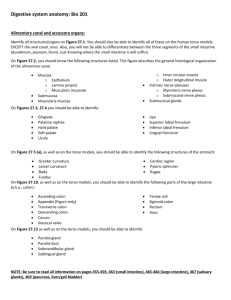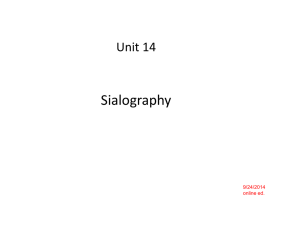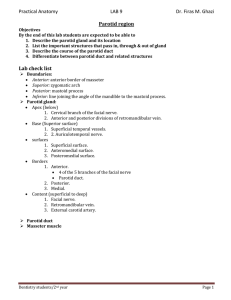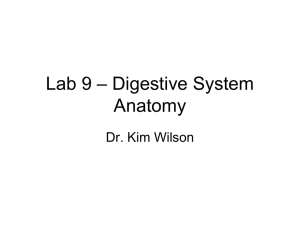Cat Dissection 1: External Anatomy
advertisement
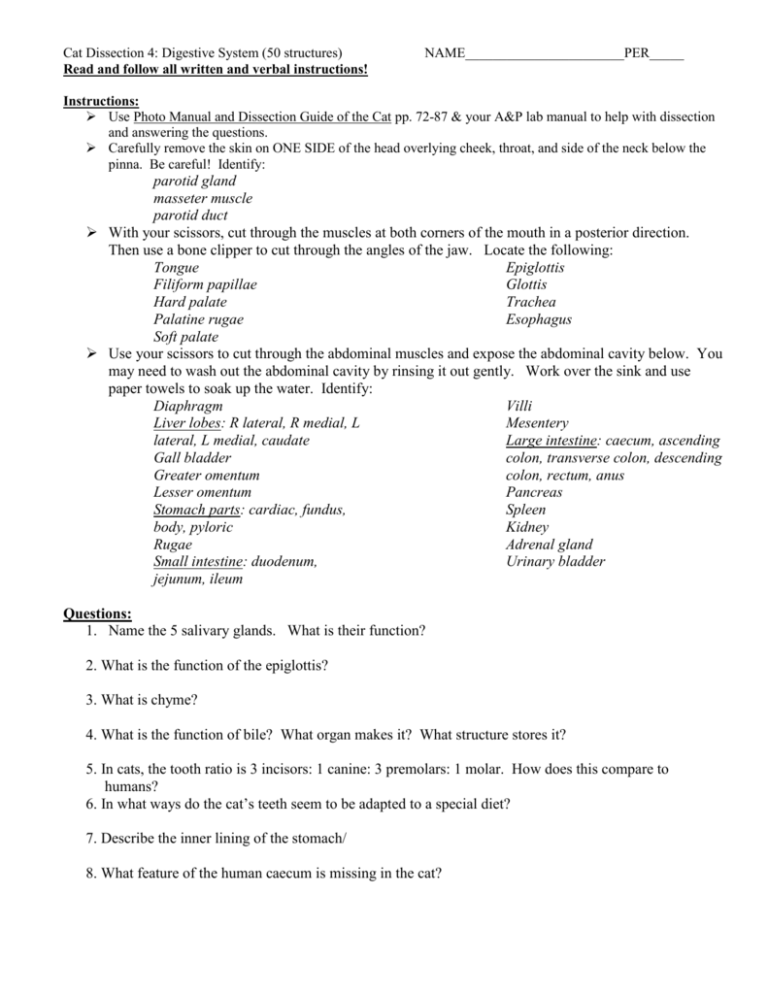
Cat Dissection 4: Digestive System (50 structures) Read and follow all written and verbal instructions! NAME_______________________PER_____ Instructions: Use Photo Manual and Dissection Guide of the Cat pp. 72-87 & your A&P lab manual to help with dissection and answering the questions. Carefully remove the skin on ONE SIDE of the head overlying cheek, throat, and side of the neck below the pinna. Be careful! Identify: parotid gland masseter muscle parotid duct With your scissors, cut through the muscles at both corners of the mouth in a posterior direction. Then use a bone clipper to cut through the angles of the jaw. Locate the following: Tongue Epiglottis Filiform papillae Glottis Hard palate Trachea Palatine rugae Esophagus Soft palate Use your scissors to cut through the abdominal muscles and expose the abdominal cavity below. You may need to wash out the abdominal cavity by rinsing it out gently. Work over the sink and use paper towels to soak up the water. Identify: Diaphragm Villi Liver lobes: R lateral, R medial, L Mesentery lateral, L medial, caudate Large intestine: caecum, ascending Gall bladder colon, transverse colon, descending Greater omentum colon, rectum, anus Lesser omentum Pancreas Stomach parts: cardiac, fundus, Spleen body, pyloric Kidney Rugae Adrenal gland Small intestine: duodenum, Urinary bladder jejunum, ileum Questions: 1. Name the 5 salivary glands. What is their function? 2. What is the function of the epiglottis? 3. What is chyme? 4. What is the function of bile? What organ makes it? What structure stores it? 5. In cats, the tooth ratio is 3 incisors: 1 canine: 3 premolars: 1 molar. How does this compare to humans? 6. In what ways do the cat’s teeth seem to be adapted to a special diet? 7. Describe the inner lining of the stomach/ 8. What feature of the human caecum is missing in the cat? Labeling: digastric muscle, external jugular vein, masseter, parotid duct, parotid gland, sublingual gland, submandibular gland mesentery, small intestine, gallbladder, kidney, urinary bladder, parietal peritoneum, R medial lobe of liver, pancreas, L lateral lobe of liver, esophagus, body, stomach, transverse colon, lesser omentum, diaphragm, rectum, descending colon, duodenum, cardiac, L medial lobe of liver, fundus, pylorus, spleen, R lateral lobe of liver
